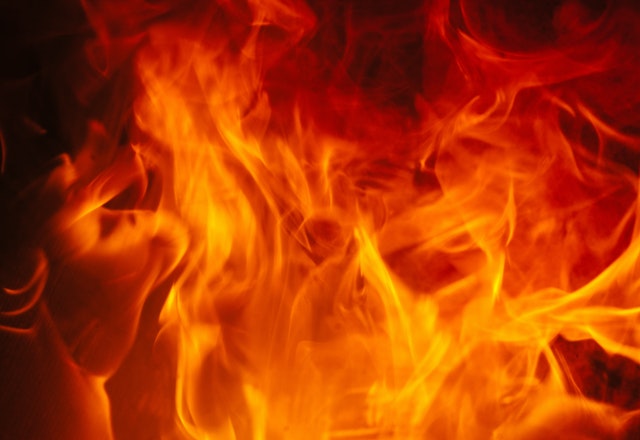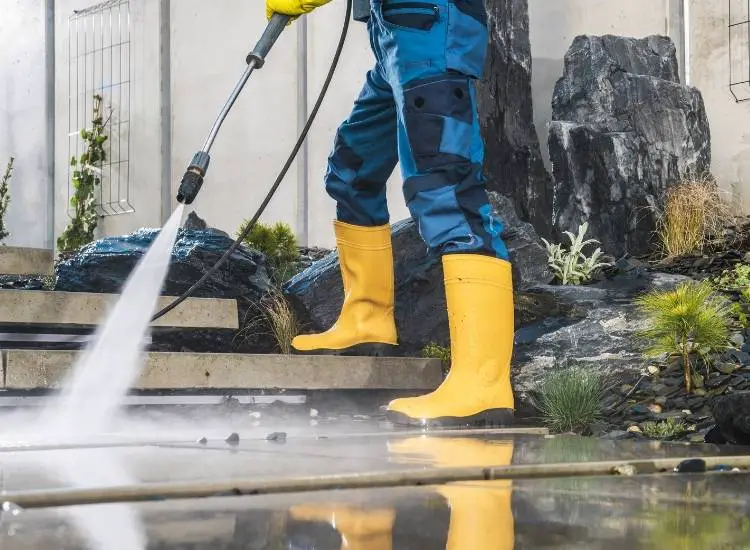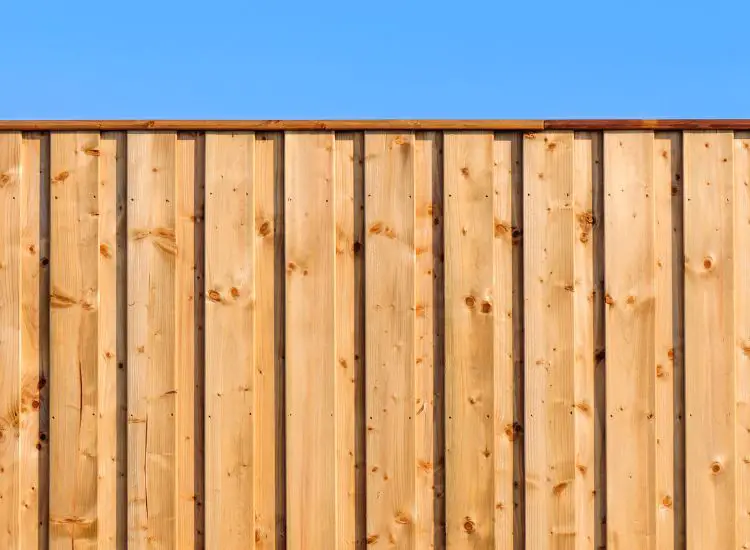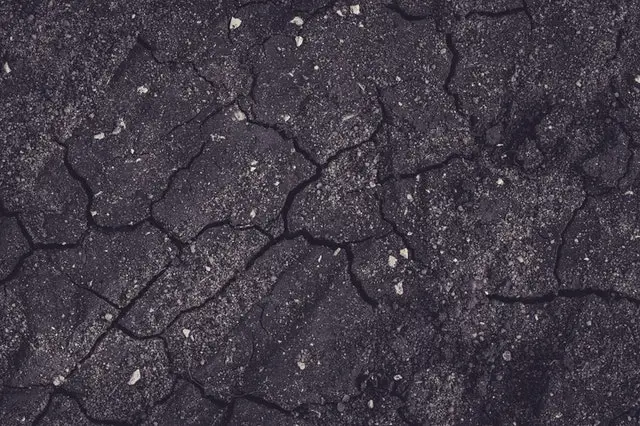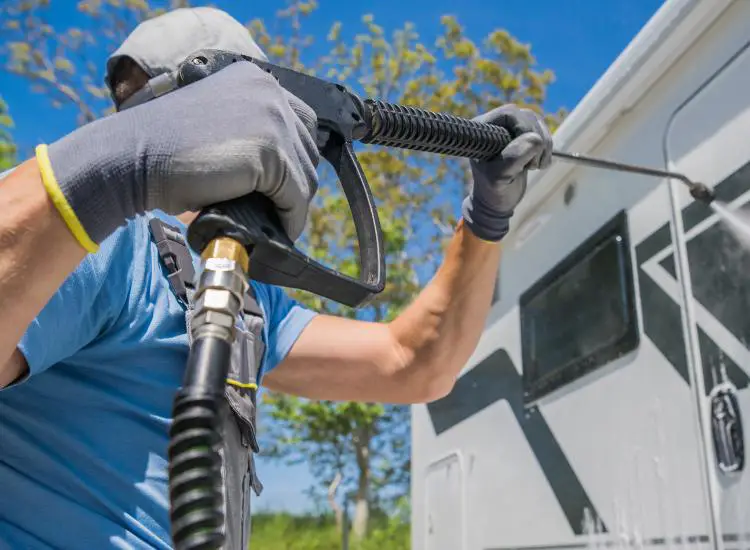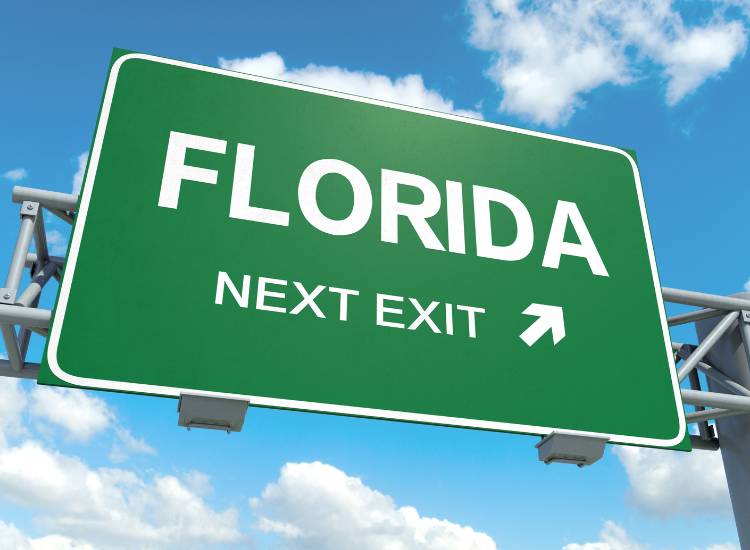How to Clean Pavers with a Pressure Washer
Have you ever seen those time-lapse videos of people cleaning driveways and sidewalks with a pressure washer? It’s incredibly satisfying to watch a dirty surface suddenly look new again. But can you clean pavers with a pressure washer (without ruining them)?
There’s no harm in cleaning pavers with a pressure washer as long as you’re using the correct surface attachment.
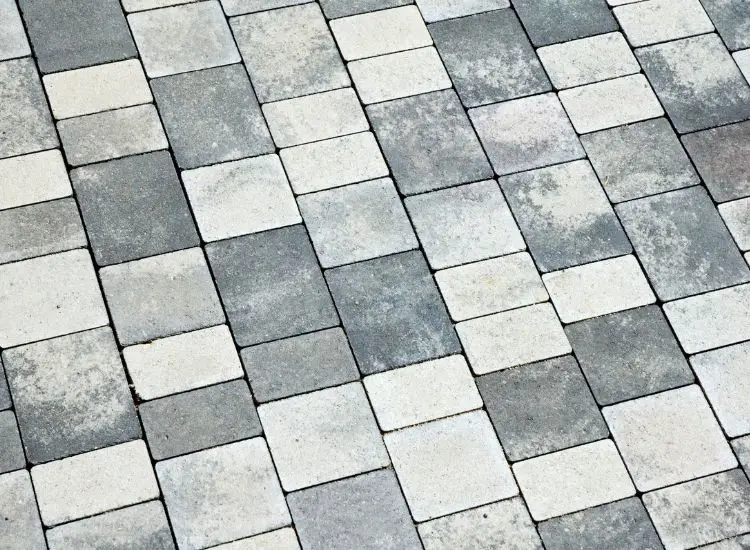
A regular wand and nozzle combination will be too aggressive for the sand held between pavers. Let’s take a more detailed look into how you can safely clean your pavers.
How Pressure Washing Can Harm Pavers
Many beginners assume that a pressure washer is a universal tool that can clean anything. However, this is far from the truth.
Pressure washers can pack some serious power and you need to understand how to use them safely. This will greatly depend on the surface you’re working with.
1. Pressure Washers Can Leave Ugly Marks
One reason why you should avoid cleaning pavers with a pressure is that it can create ugly marks and lines. This is mostly caused by the 0°, 15°, and 25° nozzles – due to their tight spray pattern.
An aggressive nozzle will remove all of the dirt, but it’s so thin you will see a line left on the surface. A 40° nozzle and soap attachment creates a wide enough spray pattern that won’t leave these types of streaks.
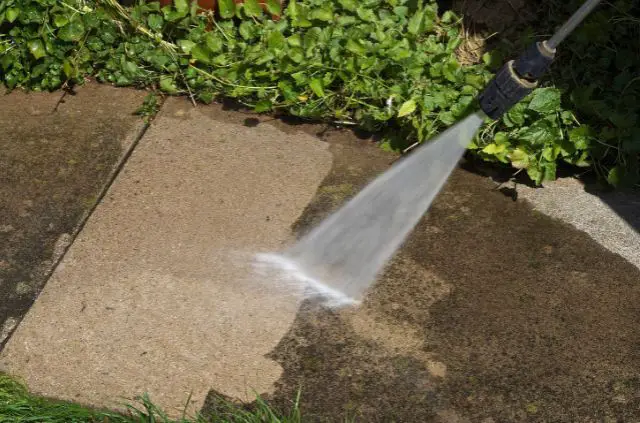
However, because the spray pattern is wider, there isn’t enough water pressure to remove all of the dirt. This is why standard nozzles won’t be able to clean pavers in the most efficient way possible.
2. Pressure Washers Can Remove Paver Sand
Materials like concrete and asphalt get poured into the ground when building a sidewalk or driveway. It will take a few days to settle, but the result will be a durable finish.
This is much different from surfaces like pavers and brick that are individually placed on the ground during the installation process. This creates a challenge when it comes time to clean pavers.
In order for a long-lasting finish, builders will apply sand in between pavers. This will make them more stable to walk on and it prevents them from shifting with time. A pressure washer will remove this sand, depending on how aggressive the nozzle is.
Standard Nozzle Attachments
| Nozzle Color | Degree | Use |
| Red | 0° | Unpainted metal or very high areas |
| Yellow | 15° | Driveways, concrete and brick |
| Green | 25° | House siding and outdoor furniture |
| White | 40° | Car paint, stucco, and other delicate surfaces |
| Black | Soap | Applies cleaning solutions |
3. Pressure Washers Create a Mess
It doesn’t matter what kind of nozzle is being used, because if it’s on a pressure washer wand you’re sure to create a mess. For starters, there will be small rocks, leaves, and other debris spread across the paver surface.
The angle at which you will be holding the wand will spray all of this dirt over your patio furniture and house. And the last thing you need is for one small rock to hit (and break) a window.
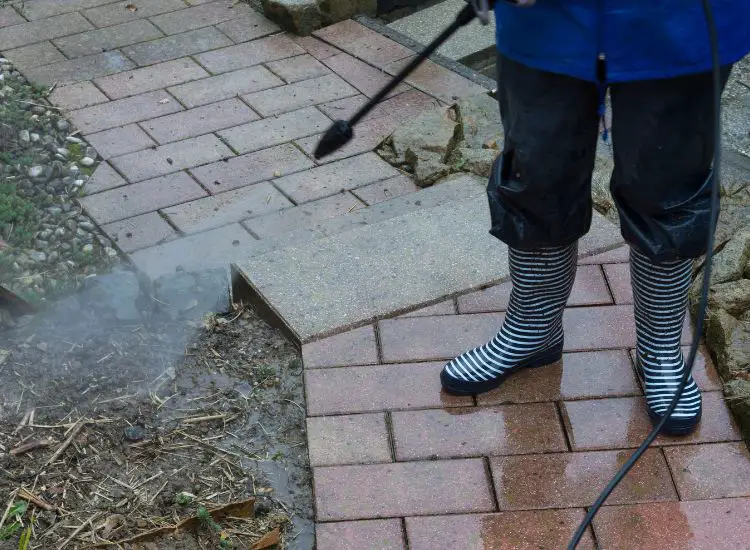
The regular wand will also be pumping out a high amount of water to the point where it will be ineffective. This is largely due to the fact that nozzles will direct water into a small surface area.
After a few minutes there will be so much water on the ground and you won’t even be able to see areas that have been cleaned. You will be fighting with gravity in order to push water away from surfaces to see if they’re clean.
4. Pavers Can Chip
Pavers are a strong building material and are meant to withstand a handful of different weather conditions. But that doesn’t mean they are durable to everything. The edges can chip when an aggressive spray nozzle is being used.
Similar to brick, spraying a paver edge with a 0° nozzle can cause damage. Just remember that any type of chipping is rare, but it’s something to look out for.
If you purchased high quality pavers there’s very little risk. But if you bought the least expensive option, build quality might be an issue. Just make sure to avoid spraying the edges down with a powerful nozzle attachment.
The Solution: A Surface Cleaner
So, what’s the solution if you can’t use the standard wand and nozzle attachment? A surface cleaner. This tool is a pressure washer attachment and gets connected to the end of your wand.
The unique circular design spins and sprays water evenly out the bottom. As a result, the surface cleaner won’t leave any marks and streaks.
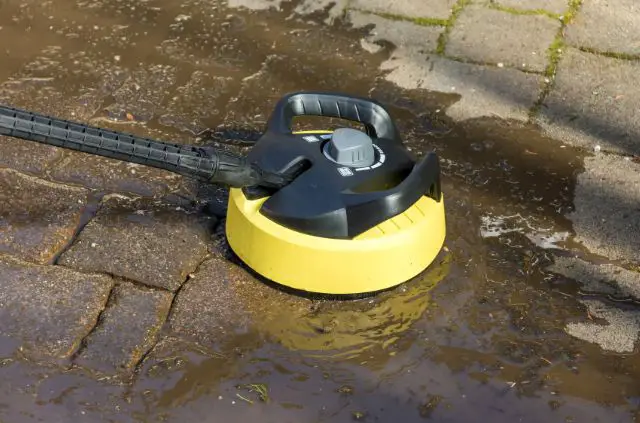
Surface cleaners come in a variety of different sizes including, 15″, 18″, and 20″. The first is plenty of size for regular cleaning around the house. It’s large enough to clean sidewalks, patios, and driveways, without being too bulky.
I would only recommend sizing up if you have a large surface to work with, or if you own a pressure washing business.
How to Clean Pavers with Pressure Washer
Using a surface cleaner attachment is the right way to clean pavers with a pressure washer. Here are the main steps to completing this project safely:
1. Clear the area
Every project should begin with a clean work area. Pavers are located outside, which means you will be washing a sidewalk, patio, or both. Remove any lawn furniture, power tools, and children’s toys that might get in the way.
You don’t want to work around these items when pressure washing, because it’s not efficient and you might damage them.
2. Prepare the edges
In the sections above we learned that using a regular wand and nozzle combination is bad for pavers. This fact remains true, but you will need to use these tools to clean the edges.
As good as surface cleaners are, they are not the best at cleaning patio and sidewalk edges. Make sure to remove any dirt from the edging with the appropriate nozzle.
3. Use a surface cleaner
We also discussed what a surface cleaner is and why you absolutely need one to clean pavers. When you have the surface cleaner securely connected to the wand, clean the area with back-and-forth vertical motions.
Follow up the the same pattern in horizontal motions to guarantee a deep clean and avoid creating ugly marks.
4. Finishing touches
Once the pavers have been successfully washed, you can begin to clean up the area. Attach a soap nozzle to the wand and quickly remove any standing water remaining on the surface.
You don’t want any dirty water sitting in the sun to dry. And don’t forget to fix any wood chips, or landscaping rocks that were moved around in the cleaning process.
Conclusion
Pavers can completely transform the look of your outdoor landscaping. But the work isn’t done once they have been installed.
Pavers should be cleaned on a regular basis for a long-lasting patio and walkway surface. Even though pavers can be delicate and shift easily, they can be safely cleaned with a pressure washer.
The trick is to use a surface cleaner attachment, so you can avoid creating a giant mess and protect the finish in the process.
Search Terms
- Can you pressure wash pavers?
- How to clean pavers with pressure washer

